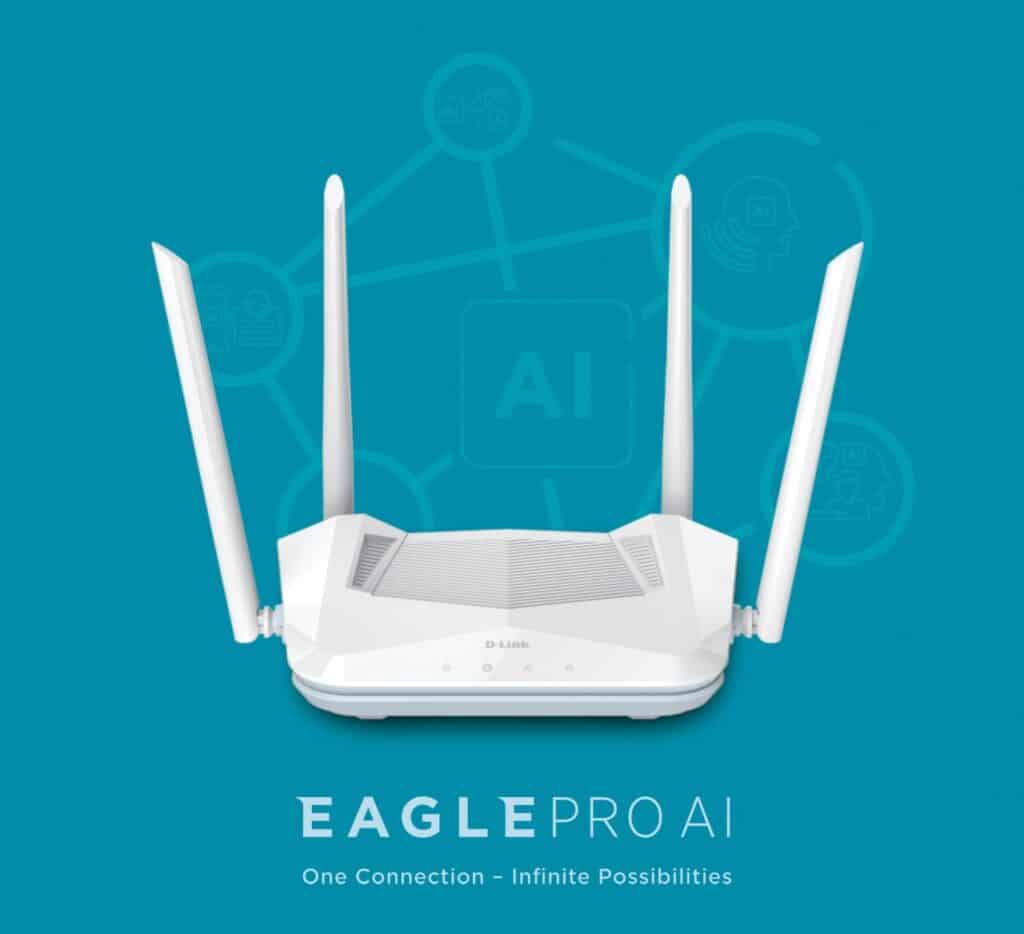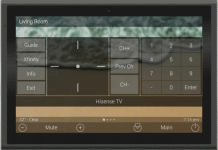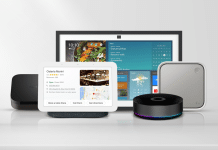
Overview
Even after the pandemic hit the world, the work schedules continue to grow hectic and energy-draining with challenging targets. The culture of “work from home”, though existed in the pre-pandemic era as well, but got worldwide recognition and acceptance since the lockdown phase, when travelling got restricted. Now, the question is, does the WFH culture make the lives of the working professionals easier by eliminating the travelling time in busy metropolitan cities or more difficult by compelling people to juggle office work and household chores at the same time? Numerous surveys have proven the latter right. Multitasking is indeed strenuous! This is when people started realizing the need for automation to eliminate the burden of performing unavoidable menial daily chores and the concept of smart homes started gaining immense popularity.
The concept revolves around connecting the primary home devices, ranging from lights, thermostats, air-conditioners, air purifiers, door locks to surveillance cameras, with the internet through a hub and controlling them using a smartphone or tablet, remotely or locally. Carrying out office work in a smart home can be quite gratifying and productive with smart lights changing colour and intensity as per the requirement of the users’ mental state, smart air purifiers and air conditioners maintaining the freshness of a room, smart ovens automatically turning off, once the chicken is roasted, smart video doorbells and door locks allowing one to sit on the couch, check who is outside the door and approve the entry accordingly with just a tap on a button. A smart refrigerator wipes out the hassle of keeping a track of stored eatables by sending notifications, to the connected smartphones, on what all are about to get over. Hence, people residing in smart homes can focus more on office work without worrying about mundane house chores. In simple words, a smart home set-up is technically a network of hardware that communicates with each other to make the home experience better and lives easier. A standard smart home system comprises three main components: controllers, sensors and actuators. Controllers receive messages about the smart devices and their statuses while allowing the user to control and monitor the smart home system. The main function and mechanism of the system are controlled by the actuators, which comprise devices like light switches and motorized valves. Motion, humidity, light and temperature are monitored by sensors.

The must-haves for an uninterrupted workflow at home:
Stable Wi-Fi connection and routers:
A stable Wi-Fi connection with a bandwidth of ideally 100 Mbps to 1 Gbps allows one to stream, download and upload content in the wink of an eye. A considerable bandwidth ensures uninterrupted virtual meetings, which often lags due to poor internet connections. Hence, steady internet connections are a must for all who cannot afford to stay offline during working hours and need to regularly download heavy audio/video content from YouTube or any other online websites. “While the world continues to battle this pandemic, people have also begun to acclimatize themselves to this uncertain scenario. Much has changed in the last one year, with technology having taken precedence in our day-to-day activities. Virtual classrooms, Home office, Online shopping, Digital payments etc are the new norms. Technology & more specifically the internet has been a key enabler in helping millions of people stay connected”, says Sanket Kulkarni, VP – Consumer Sales, D-Link (India) Ltd. .

Sanket Kulkarni, VP – Consumer Sales, D-Link (India) Ltd. . 
“We live in a Digital World where we are constantly online for various reasons. In such a scenario we need a Router that can provide a consistent internet, so that we can continue with our work without any distraction. D-Link has a wide range of Routers that cater to various needs of today’s technology driven modern lifestyle. One of our very recent introductions, D-Link Eagle PRO AI Router efficiently supports the post-covid lifestyle, by providing intelligent, network communication for bandwidth-heavy applications in device-dense homes”, adds Kulkarni.
However, routers are often hardly paid attention to or upgraded until a big malfunction occurs. Late up-gradation of routers leads to degraded internet connectivity and a poor user experience for those using the network. To ensure smooth connectivity in every corner of a room, one needs to closely keep an eye on the frequent symptoms shown by the existing router. If a router often displays network-related congestion issues, like slow web page loading or stuttering video playback, the user should immediately consider getting an extender.

“The main problem which people face is connecting Wi-Fi with the devices. Inadequate bandwidth, due to multiple internet users at home, often hinders smooth workflow while working from home. In such a case, one can use the Pocket Geek Home app to check the speed and the bandwidth throughout the house and adjust the mesh accordingly. Also, one can double-check the subscription bill of the Wi-Fi to make sure you have subscribed to one of the premium services that offers bandwidth as per the requirement of the individual user. Also, due to the placement of the router, people face connectivity issues in different parts of the houses which have thick walls. The problem often arises when a router is placed in a room corner or faced towards a certain direction. As a solution, extenders can be considered, which are easily available in the market or can be arranged by the internet providers. Extenders, which intensify the strength of the router, need to be placed in the rooms which face connectivity issues. The Pocket Geek Home app can be used to identify the rooms with maximum connectivity problems and extenders can be placed in the particular areas”, says John Morin, Product Owner, Pocket Geek Home.
“Sometimes, even after having a router and necessary extenders all over the house, connecting devices with the internet in certain areas turns out to be difficult. In such a scenario, up-gradation of the router might be necessary, especially if it is more than three years old or you are based out of an urban area, where there is a lot more Wi-Fi connection around, that often interferes with your Wi-Fi network mesh. Also, as mentioned before, the position of the router also makes a lot of difference in terms of offering connectivity. Fundamentally, when a router is placed in the middle of the room, it offers connectivity to the entire area, but, when placed in a corner, half the signal goes outside. You can think of it as a bubble around the router when it is in a corner, half the bubble goes outside the room, whereas, if placed in the middle of a room, it is spread across the entire room, while making a lot of difference”, adds Morin.
Smart Speakers and Voice assistants:
Enhancing the comfort level, smart speakers operate with voice commands, issued to the smart devices. A smart speaker can be linked to a smart lighting system or smart security systems at home, to control them using voice commands. Google Home series and Amazon Echo series are at the top of the list of most popular smart speakers.
Voice assistants like Alexa and Google Assistant are selling like hot cakes in metropolitan cities with a maximum number of working professionals. This is because the voice assistants often act like digital personal assistants, who are responsible for keeping a track of all the virtual meetings, fetching revenue targets and reminding them about crucial events, marked on their work calendars. Research says, 75-80% of households with a Wi-Fi connection have one of the above-mentioned voice assistants. With Alexa, one can experience the ultimate convenience of simply commanding it to join a zoom meeting on Amazon’s smart display called the Echo Show. Also, Alexa can calm the overstressed mind of the user, in the middle of the work, by playing relaxing music, with just one voice command.
Smart Hubs:
In a smart home set-up, information is passed from the smart hub to the smart devices through wireless receivers and radio transmitters, which connect the home internet network and enable the smart hub to relay the required messages to the smart devices. Smart hubs can work well with protocols like Zigbee, Z-Wave, Bluetooth and Wi-Fi. Among the popular smart hubs are Google Home and Philips hub.
Smart Time Keepers
Timeular’s ZEI timekeeper, a small die, eliminates the task of manually filling out a timesheet, which is often asked for by certain offices, which need to keep a track of the work-time of each employee while working from home. One can assign each of the eight sides of the die to different office tasks like emails, phone calls, meetings etc. by marking a symbol that refers to each one. The die can be then flipped to a particular side when performing the task, while the timekeeper starts the clock. The timesheets are taken care of by ZEI’s app. Smart time keepers are quite beneficial for freelancers, as this helps to track the number of hours invested in a particular project and charge the client accordingly.
Global market growth rate initiated by the WFH culture:
Projected to grow from USD 84.5 billion in 2021 to USD 138.9 billion by 2026, the global smart home market is anticipated to grow at 10.4% CAGR from 2021 to 2026 (As per the reports on researchandmarkets.com). The main reason behind the growth rate is said to be the factors like increasing purchasing capacity of people in the metropolitan cities of the developing countries and most importantly the increasing need for automation in the daily lives of working professionals, who mostly work from home and hence spend a lot of time indoors. With the uncertainty prevailing since 2020, people all over the world have accepted the concept of working from home and the need for “home entertainment” like home theatres. This is eventually pushing the growth of the global smart home industry. The market for lighting controls is expanding with lightning speed due to the increasing requirement of cutting down the electricity bills, as people are sitting at homes all day long, either working on personal computers or getting entertained in front of their smart televisions. The main reason behind the growth is the capability of the lighting control to reduce electricity consumption in homes, as the sensors adjust the intensity of artificial light, considering the intensity of natural light. Besides, by offering convenience and comfort simultaneously, lighting controllers are rapidly making their places in most urban houses. The increasing environmental concerns and the global efforts put into ensuring the betterment and conservation of “Mother Earth” are among the primary reasons the smart home industry is advancing. However, certain security concerns and privacy breaches often hinder the advancement of the industry.
Security concerns while working from home :

With smart home technology and automation, life has become easier than ever. However, the way a coin has two sides, working from a smart home has a few drawbacks as well. “There has been an increasing demand in the use of smart home technology and it is observed that smart devices aren’t always secure. Smart devices typically hold a huge amount of personal, corporate, and sensitive data of customers and a hacker can infiltrate the database of a smart-device company to steal the data of all its users rather than breaching a single individual’s smart device. He/she can also spy on people in real-time if the smart device gets hacked. Cyber security experts will see an increasing threat to the home infrastructures as the key target and challenge for them to address as cybercriminals will find such systems easy to use and infiltrate. Smart home security systems may become the entry point for a criminal to steal sensitive data off your home network if not implemented securely”, says Gaurav Batra, Founder and CEO, CyberFrat. Work From Home is the new normal and it is expected to continue prevailing in the coming years. But, often there is a risk of sensitive information reaching an unsafe environment, where it can be misused in multiple ways. “Without the security protections that office systems offer, such as firewalls, blacklisted IP addresses, and increased reliance on technology, we are far more vulnerable to cyber-attacks while working from home. Unbarred personal technologies and practices could turn out to be fatal in terms of security. An unsecured home router and software application is an inherent opportunity for adversaries to use as part of a larger attack. Also, along with the right technology implementation, there is a need to make people aware of the threats like Phishing and Ransomware and best practices to avoid them i.e., using VPN, Multi-factor authentication, secure file-sharing mechanisms and not clicking on an unknown link”, adds Batra.
Summary:
The pandemic has changed the way we live, think and work. Today, smart home industry giants like Amazon and Google aim to equip workers with productivity tools that can help them work more efficiently from home. Users can now create workday routines that automatically remind them not only about their deliverables and pre-scheduled meetings but also about when to take a short break, dim the lights or even get a glass of water to stay hydrated.















